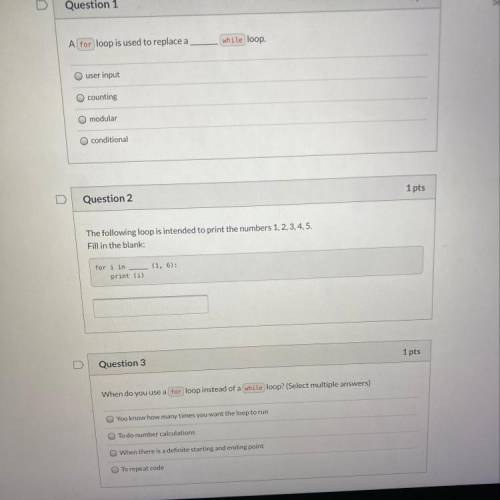4.7 lesson practice help need
...

Answers: 3


Another question on Computers and Technology

Computers and Technology, 22.06.2019 05:10
Suppose we have a byte addressable computer that has a 32-byte cache with 8 bytes per block. the memory address is 8 bits long. the system accesses memory addresses (in hex) in this exact order: 6e, b9, 17, e0, 4e, 4f, 50, 91, a8, ab, ad, 93, and 94. (a) assuming the cache is direct mapped, what memory addresses will be in cache block 2 after the last address has been accessed? (b) assuming the cache is direct mapped, what is the hit ratio for the entire memory reference sequence given, assuming the cache is initially empty? (c) assuming the cache is 2-way set associative with a lru replacement policy, what is the hit ratio?
Answers: 3

Computers and Technology, 23.06.2019 18:40
Johnson enterprises uses a computer to handle its sales invoices. lately, business has been so good that it takes an extra 3 hours per night, plus every third saturday, to keep up with the volume of sales invoices. management is considering updating its computer with a faster model that would eliminate all of the overtime processing.
Answers: 2

Computers and Technology, 24.06.2019 01:30
Hazel has just finished adding pictures to her holiday newsletter. she decides to crop an image. what is cropping an image?
Answers: 1

Computers and Technology, 24.06.2019 14:40
Create a function (prob3_6) that will do the following: input a positive scalar integer x. if x is odd, multiply it by 3 and add 1. if the given x is even, divide it by 2. repeat this rule on the new value until you get 1, if ever. your program will output how many operations it had to perform to get to 1 and the largest number along the way. for example, start with the number 3: because 3 is odd, we multiply by 3 and add 1 giving us 10. 10 is even so we divide it by 2, giving us 5. 5 is odd so we multiply by 3 and add one, giving us 16. we divide 16 (even) by two giving 8. we divide 8 (even) by two giving 4. we divide 4 (even) by two giving 2. we divide 2 (even) by 2 to give us 1. once we have one, we stop. this example took seven operations to get to one. the largest number we had along the way was 16. every value of n that anyone has ever checked eventually leads to 1, but it is an open mathematical problem (known as the collatz conjectureopens in new tab) whether every value of n eventually leads to 1. your program should include a while loop and an if-statement.
Answers: 3
You know the right answer?
Questions

Geography, 23.02.2021 23:30

Biology, 23.02.2021 23:30

Mathematics, 23.02.2021 23:30



English, 23.02.2021 23:30

Mathematics, 23.02.2021 23:30


Social Studies, 23.02.2021 23:30

History, 23.02.2021 23:30

Mathematics, 23.02.2021 23:30


Chemistry, 23.02.2021 23:30


Mathematics, 23.02.2021 23:30

Health, 23.02.2021 23:30



Mathematics, 23.02.2021 23:30




